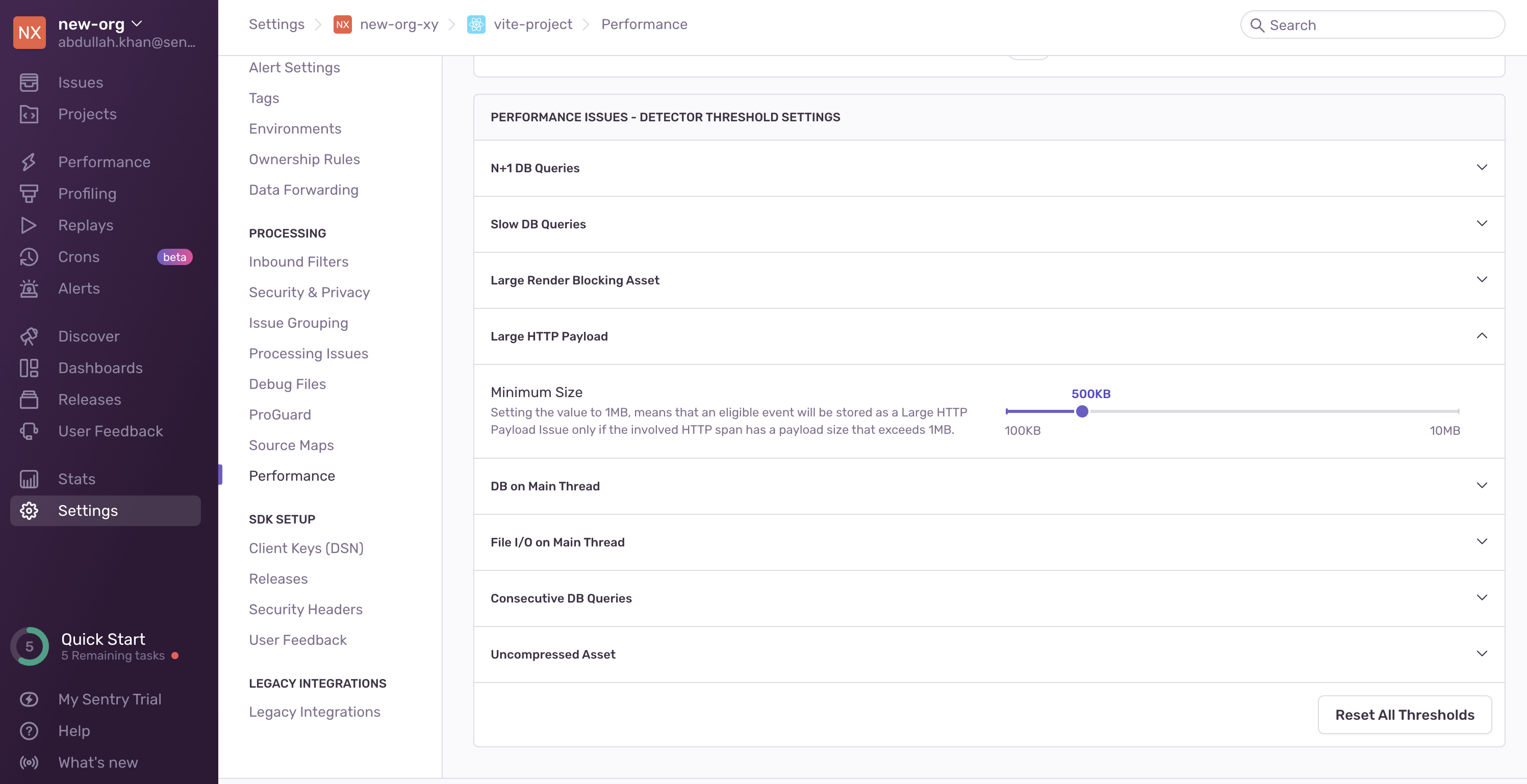Large HTTP Payload
Learn more about Large HTTP Payload issues, how to diagnose and fix them.
Large HTTP Payload issues are created when an http span has an encoded body size that exceeds a threshold.
The detector for this performance issue looks for a single http span that meets the following criteria:
- The HTTP url must not begin with _next/static/ or _next/data/
- The HTTP url must not end with an extension (e.g. .js, .css, .png, .jpg, .jpeg, .mp3), unless the extension is .json
- The HTTP span must have an
http.response_content_length(added by the@sentry/browserSDK, version7.53.0) that exceeds300kb - The HTTP span duration must exceed 100ms
If Sentry isn't detecting a Large HTTP Payload issue where you expect one, it's probably because the transaction didn't meet one of the above criteria.
You can configure detector thresholds for Large HTTP Payload issues in Project Settings > Performance:
You can find additional information about your Large HTTP Payload problem by four main aspects in the "Span Evidence" section:
- Transaction name
- Large HTTP Payload Span: The large HTTP span, usually containing the asset url.
- Payload Size: The size of the payload in bytes.
View it by going to the Issues page in Sentry, selecting your project, clicking on the Large HTTP Payload issue you want to examine, then scrolling down to the "Span Evidence" section in the "Details" tab.
The reasons for getting consecutive Large HTTP Payload issues vary, but here are some suggestions to help you resolve them:
- If you have control over the backend, check if you're sending more data than you need or if the data can be processed further before being sent to the client.
- If all the endpoint data is needed, consider methods such as pagination to split up data across views.
- Check if any changes were made to your serializer that may have resulted in a larger body size than necessary.
Our documentation is open source and available on GitHub. Your contributions are welcome, whether fixing a typo (drat!) or suggesting an update ("yeah, this would be better").

